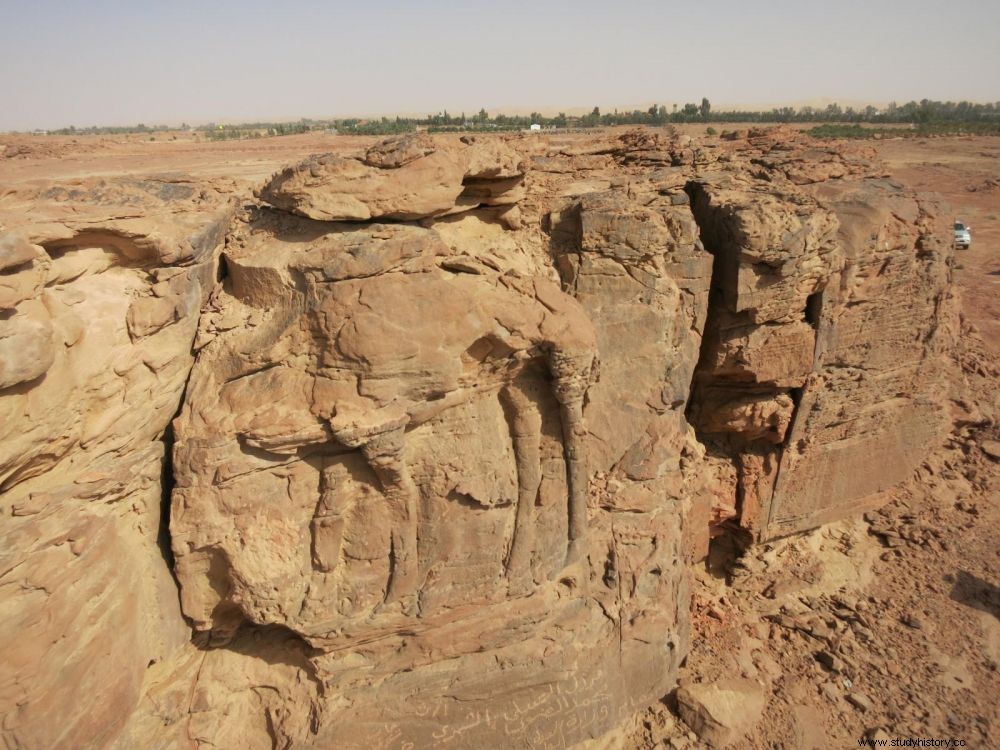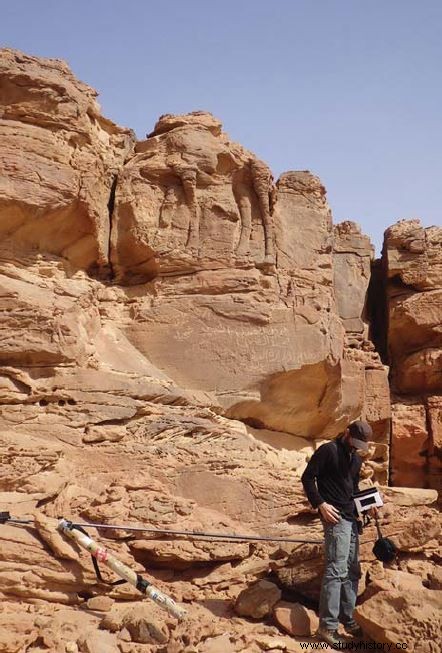For the first time, bas-reliefs of dromedaries in real size have been found in Saudi Arabia.

A standing dromedary, sculpted in high relief, on the facade of a rocky outcrop in the province of Jawf (Saudi Arabia).
Camelids are definitely in the spotlight! After the discovery of the oldest representation of a Bactrian camel painted 8000 years ago on the walls of a cave in Central Asia, it is the figure of the largest dromedary - sometimes called Arabian camel (Camelus dromedarius ) – which was found in Saudi Arabia among a set of rock-cut camelids and equines. Is the only representation of this kind according to the team of French and Saudi archaeologists of the Saudi National Heritage Commission at the origin of this work as reported in an article in the magazine Antiquity *.
The discovery took place in northwest Arabia in the province of Jawf, already known for its concentrations of petroglyphs. Long remained inaccessible to scientists, it is gradually revealing its unsuspected treasures like a few months ago, these mysterious structures on the ground spotted by aerial overflights. This time it took a good eye for the experts to discern the dozen works sculpted in bas-reliefs, tone on tone, in three pink sandstone spurs of the famous Arabian desert. The site has also been named “Camel Site (the Camel website).
Researcher at the foot of one of the high reliefs of "Camel Site". © CNRS/MADAJ
"The relative rarity of these ancient rock landforms has been a significant obstacle to understanding the development, function and socio-cultural context of such rock art , explains to Sciences et Avenir Guillaume Charloux, of the Orient-Mediterranean Laboratory (CNRS), responsible for these new investigations. Analysis and stylistic comparison of these works suggests a distinct Arabic tradition, possibly rooted in Nabataean and Parthian influences ". Or those of the ancient civilization of traders and caravanners from neighboring Jordan (4th BC-1 st ap. JC), founders of the famous city of Petra (Jordan) or of the site of Madâin Sâlih (Arabia), or even of the imposing Persian power (IVth century BC-IVth century AD), whose extension reached the shores of the Arabian Peninsula.
This remote and seemingly uninhabitable site is said to have attracted sculptors around the Christian era, the first centuries B.C. and A.D. Why? What might these testimonials have been used for? “Perhaps they were geographical markers or places of worship “say the researchers. A new field of investigation is opening up for the study of rock art in the Arabian Peninsula.
*"The art of rock relief in ancient Arabia:new evidence for the Jawf province", Antiquity , February 2018.

